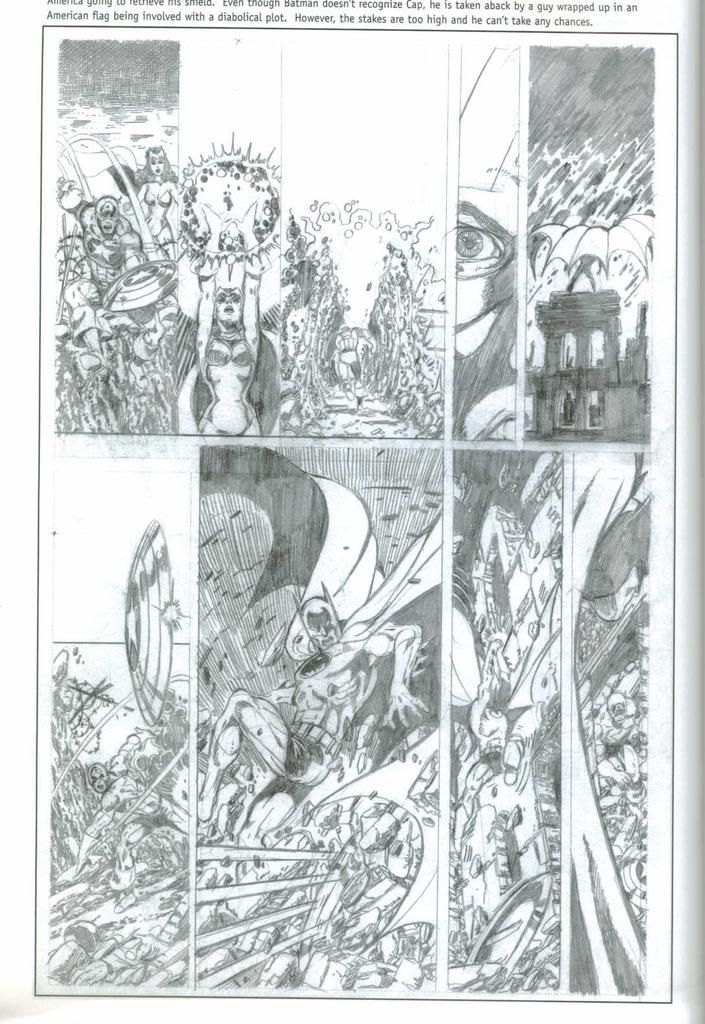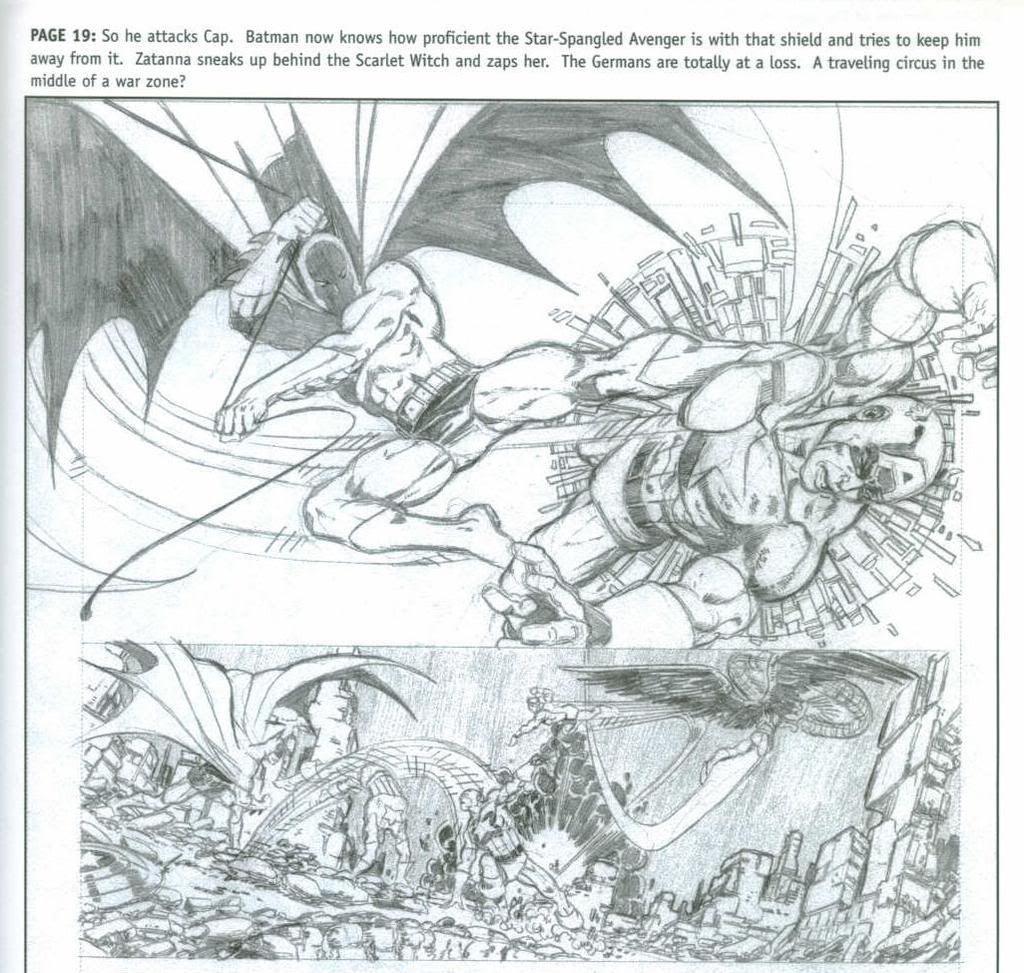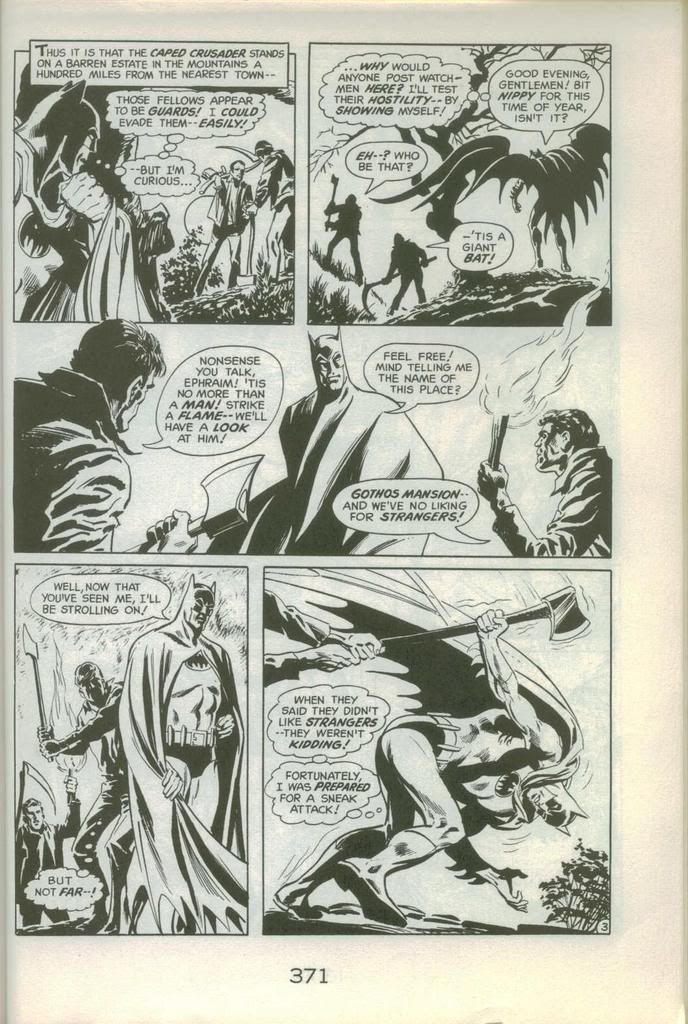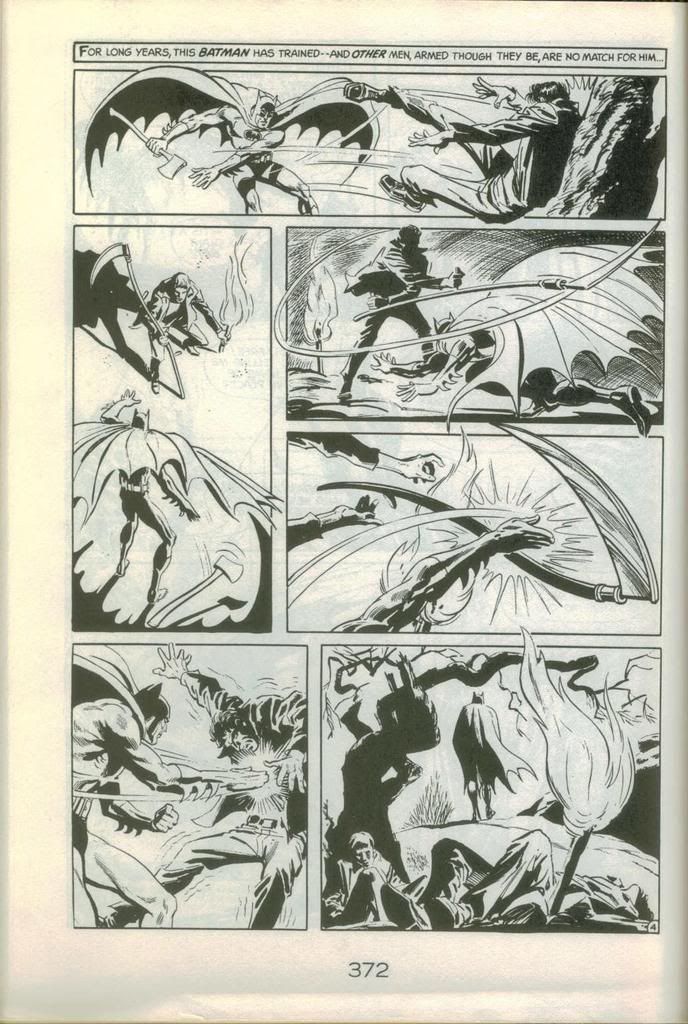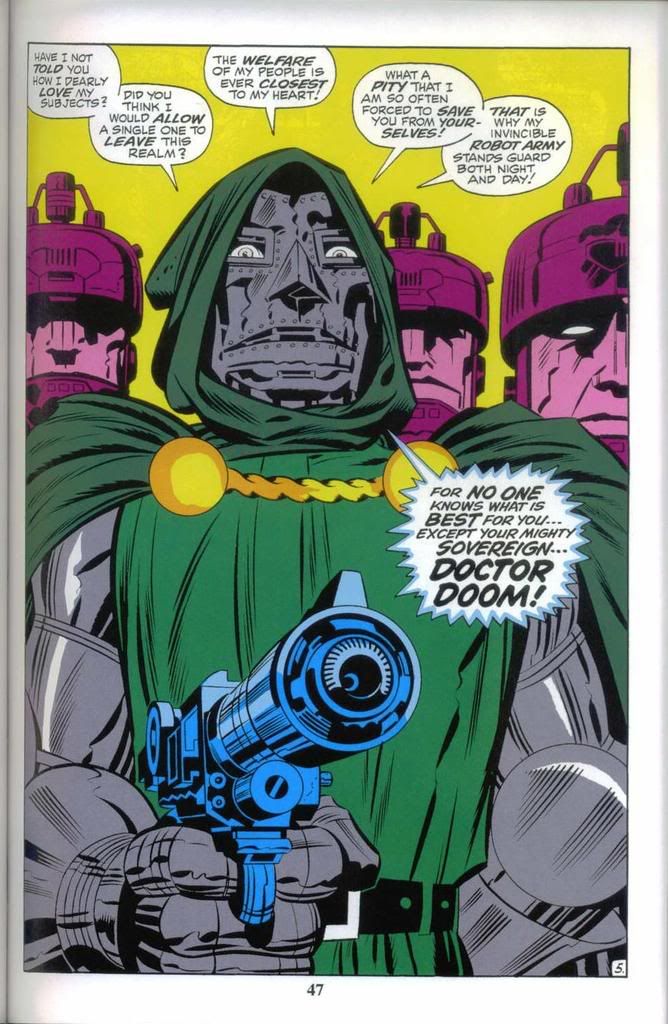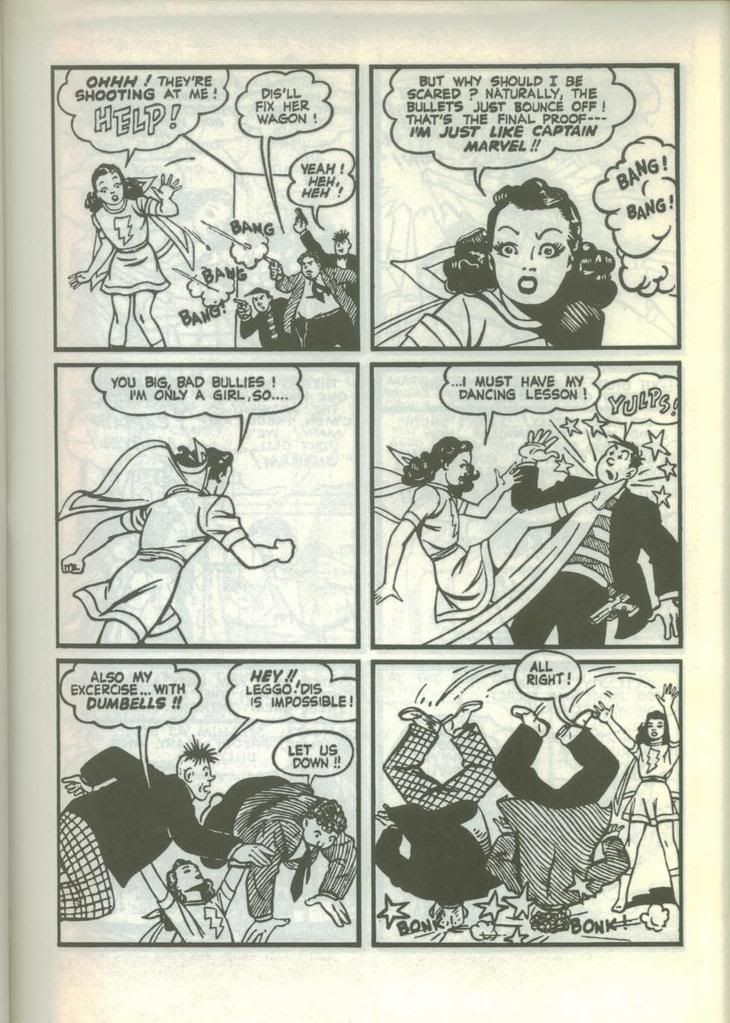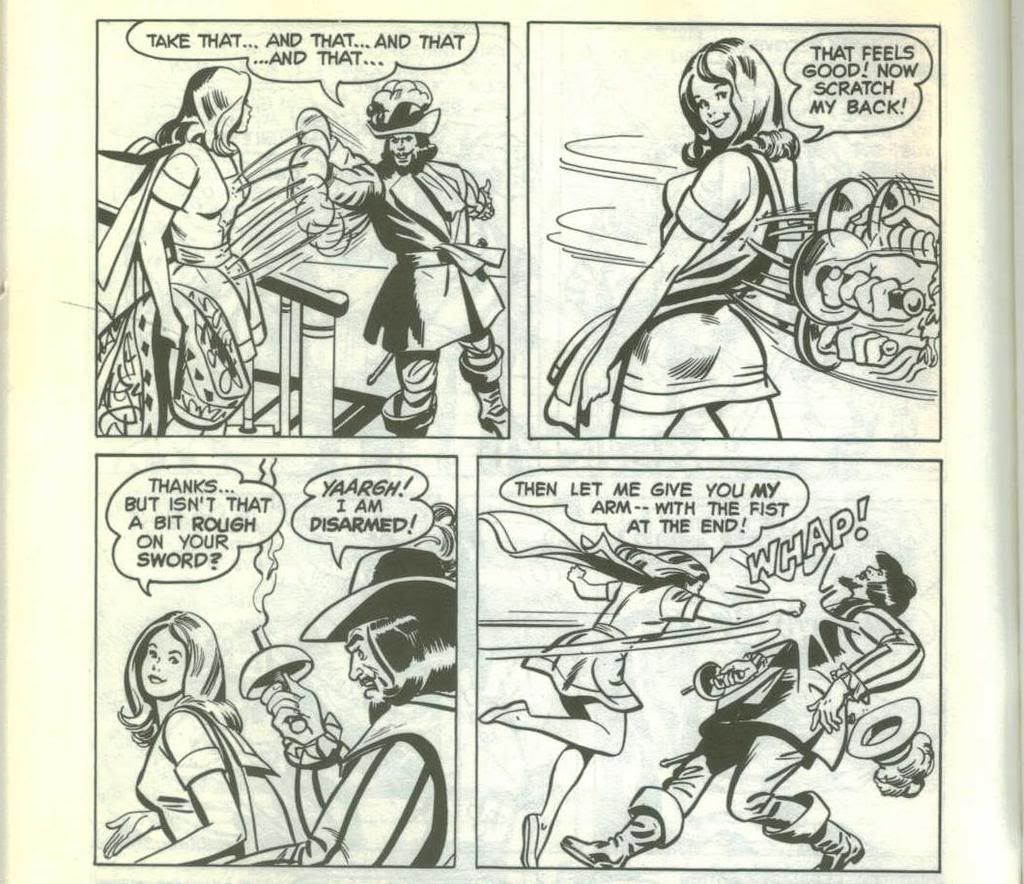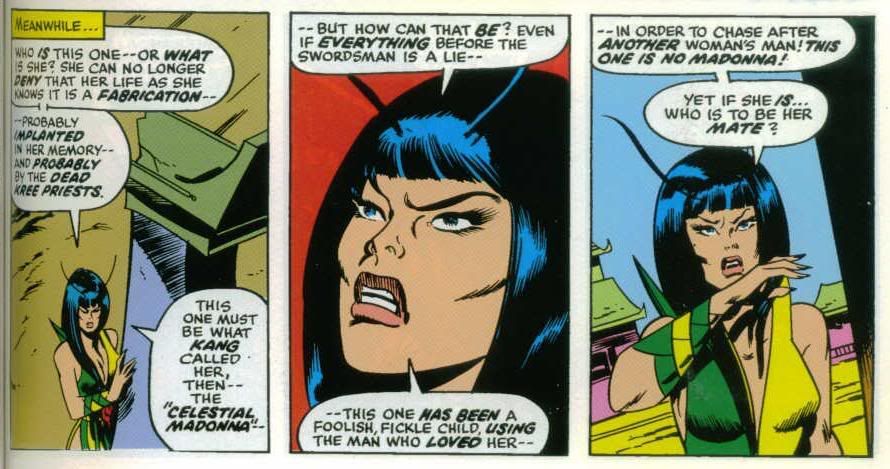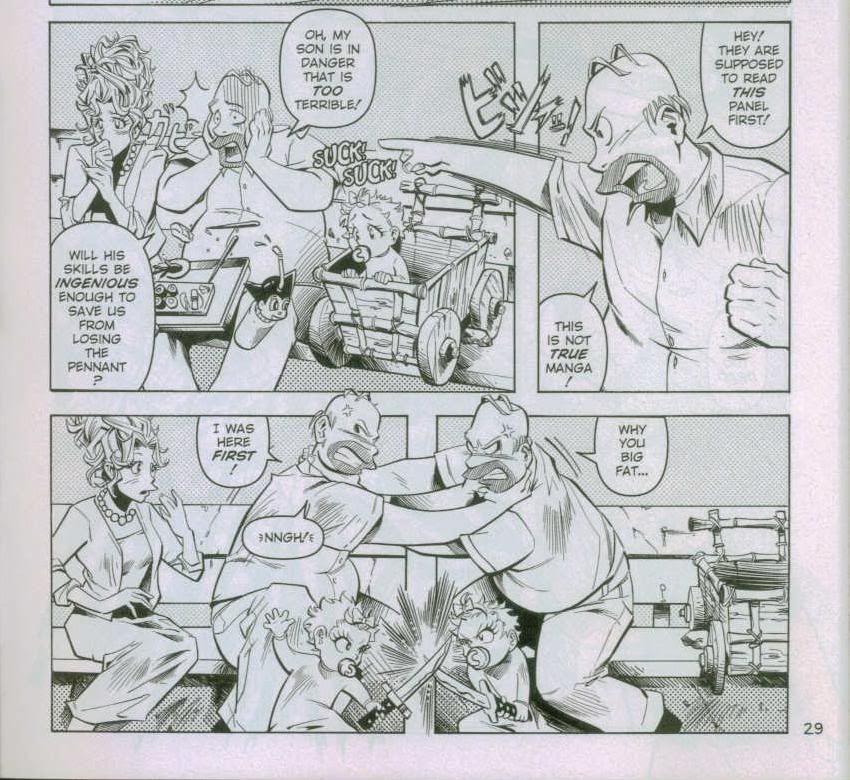Therefore, might as well begin with the lead-in to the latest LWE, Justice League of America #21 (written by Dwayne McDuffie, pencilled by Carlos Pacheco, inked by Jesus Merino). I really, really hope that this is the last crossover-affected issue of JLA for a while. It begins with a 9-page sequence of the "Trinity" sitting around a table talking about how they're not really running the League from behind the scenes. I thought the dialogue was good ("I had a run-in with Mr. Polka-Dot." "Is that a euphemism?"). However, although Pacheco kept the talking heads from getting too boring, he could have used a few flashback images. Overall, it assumes a little too much knowledge, even on the part of the longtime reader. I presume this will have repercussions in JLA itself, but I wouldn't be at all surprised if it showed up later in Trinity.
The bulk of the issue concerns the Human Flame, his fight with Red Arrow and Hawkgirl, and his recruitment by Libra. HF is a schmoe, that's for sure; but he's not the stereotypical lovable-loser supervillain schlub. McDuffie gives him a mean streak that undercuts whatever sympathy we might be starting to feel. Likewise, Pacheco doesn't play up any endearing parts of his dumpy appearance. Overall, this was a well-told story, but I still think it should have been in a Secret Files.
For those of you who know the dirty secret of cruise ships -- namely, that they give the surviving passengers hush money to cover up all the deaths -- the nautical nastiness depicted in The Spirit #17 (written by Mark Evanier and Sergio Aragones, pencilled by Aluir Amancio, inked by Terry Austin) will come as no surprise. This was yet another light-hearted, compact caper using Will Eisner's characters and designs; but one of the subplots seemed pretty obvious and the other only slightly less so. Also, from what little I've read of the original Spirit stories, I don't remember Ellen Dolan being such a self-absorbed Barbie doll. Amancio and Austin's work is more cartoony than Paul Smith or Mike Ploog, but it gets the job done.
According to the first page of Fantastic Four #557 (written by Mark Millar, pencilled by Bryan Hitch, inked by Paul Neary), I should have read Mighty Avengers #11 first. However, I don't know why; and I'm not eager to track down a 3-month-old issue to find out. Anyway, I did like how Reed and Sue celebrate their anniversary, but the rest of it is a bunch of exposition wrapped around a one-joke fight scene. I can kind-of accept "the Anti-Galactus," but things like Johnny's nympho supervillain girlfriend and the faux-drama about Reed being tempted just seem artificial. The snow effects look better this time, though.
Captain America #38 (written by Ed Brubaker, pencilled by Steve Epting, inked by Epting and Mike Perkins) (re)introduces what I presume is the last player in this particular arc, and sets him up against Bucky/Cap. It's hard to explain without giving everything away, but I'll try. Using a raid on an AIM base as its main sequence, the issue examines the relationships of mentors and proteges, and inspirations and successors; and observes that, for the three principals involved, those roles have shifted, if not outright reversed. It's a neat little chapter which probably sums up at least one of Brubaker's overriding themes, and while it might appear to be a simple action issue, there's a lot more going on.
For the second straight month, Tangent: Superman's Reign (#3 written by Dan Jurgens, pencilled by Jamal Igle, inked by Robin Riggs) focuses on the squad of Tangenteers trying to free the Tangent Atom. While that subplot achieves some closure, and the two worlds' characters actually come into conflict (as opposed to comparing notes), it still feels a little redundant. I like Igle's work fine, although Riggs' inks are looser than what Igle usually gets. It feels more like a Justice League story than what's been in JLA lately; and next issue I bet things will pick up.
The "Dark Side Club" banner started appearing on particular DC titles last week, and it looks like the kind of underground fight-club we've seen before. Specifically, Birds Of Prey #118 (written by Tony Bedard, pencilled by Nicola Scott, inked by Doug Hazlewood) opens with a fight involving Sparx, a D-list character whose abduction we see in the first issue of Final Crisis. So, you know, there's that crossover element we like so much. The rest of the issue involves Black Alice and Misfit fighting, again. This issue introduces a new aspect of their relationship which leads to a result I wasn't expecting. However, I wasn't expecting it because their relationship feels artificially manipulated to begin with, and the latest twist just seems like another manipulation. Scott and Hazlewood are good as always, with (I hate to say it) a grisly, shadowy death being a particular highlight.
The new issue of The Flash (#240, written by Tom Peyer, drawn by Freddie Williams II) also sports a "Dark Side Club" banner, but it's incidental to the main story of Wally and Jay vs. Grodd and Spin. I can't complain any more about Williams' chunky Flash, because he seems to have gotten through that phase. I also got a kick out of this issue's mind-control victims talking in Local-Newscast-ese -- it's funny 'cause it's true. The cliffhanger makes me wonder about the length of the current setup, though....
Finally, here's Jay Garrick again, teaming up with Batman in The Brave and the Bold #13 (written by Mark Waid, pencilled by Jerry Ordway, inked by Scott Koblish and Bob McLeod). They make a good team, because the easygoing Jay not only provides a good counterpoint to Batman's intensity, Batman respects him and so dials it back a few notches. The plot, involving an old Bat-villain, a mad scientist, killer robots, and Jay's chemist colleagues, may be more complicated than it needs to be, but it's probably necessary to get these two characters together. I daresay Ordway's more understated style is better-suited to this story's amiable nature than George Perez's would have been; and Waid provides good conversation amongst all the robot-smashing.
Look for the comics from Thursday (Happy Grant Morrison Day!) in the next couple of days.
